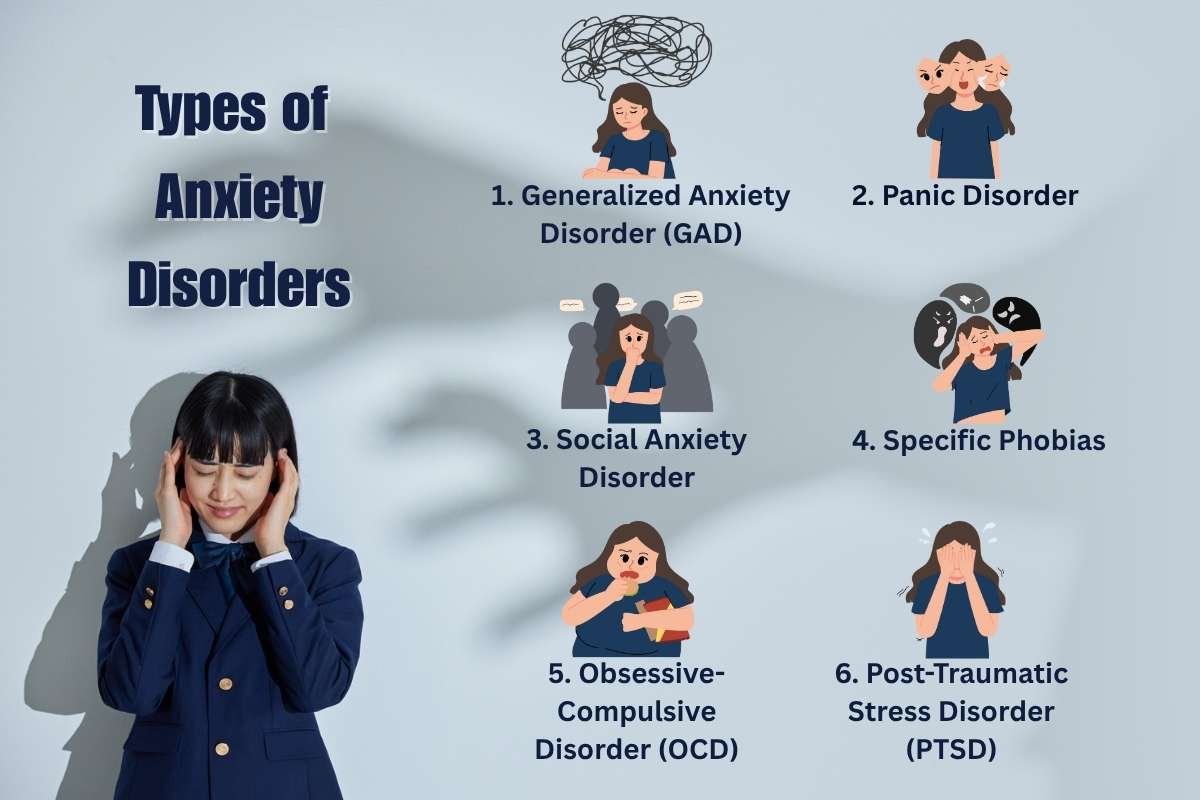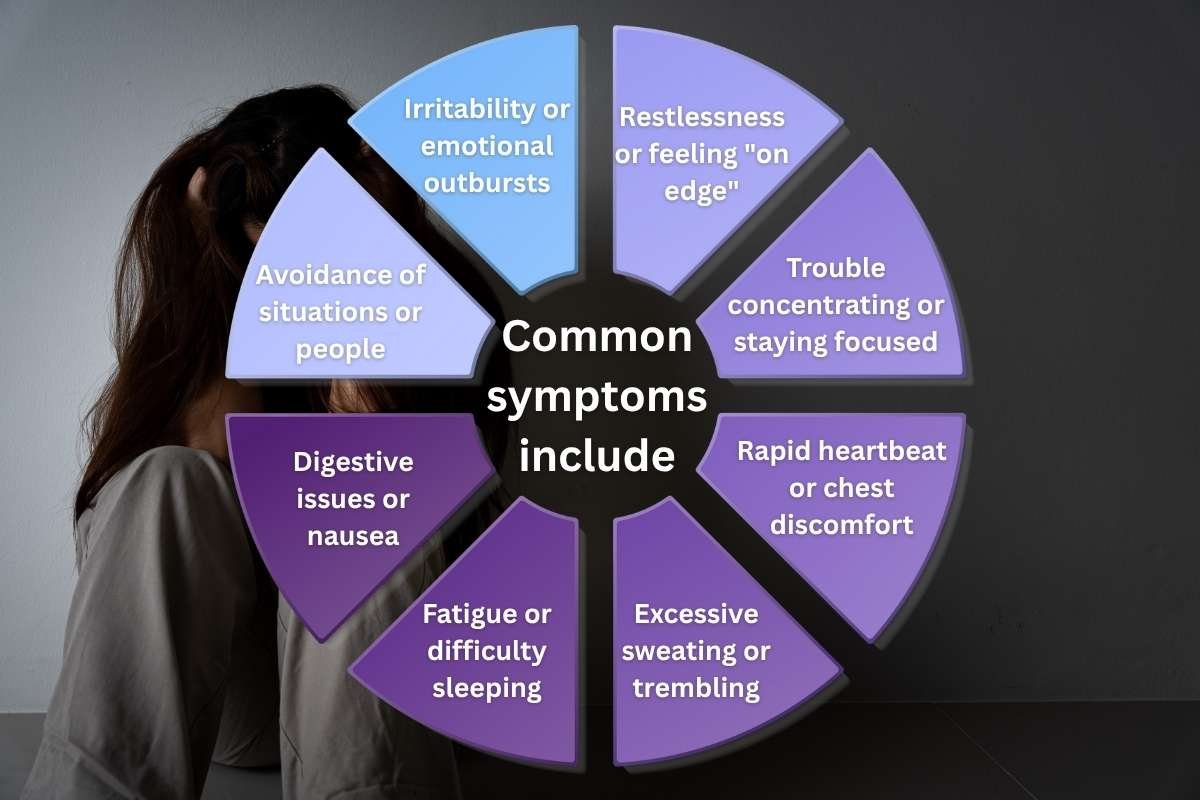It always starts small, as the heart rate increases, just in that moment where everything feels surreal. It pushes you into a state of fear, causing extreme nervousness. Experiencing occasional Anxiety is a regular part of life. You may feel anxious about a first date, a job interview, or a presentation at work. However, its intensity varies from person to person as it goes beyond the nervousness and slight fear you may feel from time to time. The overwhelming feeling won’t go away; it lasts longer until your daily life is under constant threat.
Anxiety affects over 280 million people worldwide, according to the World Health Organization. More than just nervousness, it is a recognized mental health condition that can affect your body, mind, and relationships. The downside is that it has the nature of hiding as a side effect of other symptoms. It may show up as irritability, insomnia, chest tightness, or avoidance of things that used to feel normal. The times have become uncertain with a constant information dump, causing it to become increasingly common.
This article will help you understand this disorder, how it affects people, and what steps you can take to regain balance and control.
What is it about feeling anxious?
Anxiety is a type of mental ill condition. It is your body’s natural response to stress. You get a feeling of fear or apprehension about what’s to come. However, if these feelings last longer and affect your daily life, then it could be more than just an everyday thing of feeling anxious. At that point, it is described as an anxiety disorder, an intense condition impacting your mental well-being.
What is anxiety disorder?
Feeling anxious about significant life changes is normal, like moving somewhere new, starting a new job, or even taking a test. While these feelings aren’t pleasant, they can push you to work harder and perform better. This everyday kind of It comes and goes, and it doesn’t stop you from living your everyday life.
However, if you have an anxiety disorder, that feeling of fear can be constant. It becomes incredibly intense and, at times, can be truly debilitating, making it hard to function. This overwhelming feeling might cause you to avoid activities you once loved. For instance, it could prevent you from stepping into an elevator, crossing the street, or, in severe cases, even leaving your home. If you don’t get help for it, this kind of Anxiety will likely continue to worsen.
Why Is It a Big Problem in Today’s World?

Anxiety is no longer confined to clinical settings or extreme cases. It has quietly crept into everyday life, often without us even realizing it.
It becomes a significant problem when it begins interfering with daily tasks, decision-making, or sleep. The ongoing nature of today’s stressors means that It can become chronic, making early recognition and support even more crucial.
This disorder can be linked to several interconnected factors:
1. Information overload:
Constant news and social media access can heighten fear, comparison, and helplessness.
2. Social isolation:
People feel lonelier despite being more digitally connected, especially since the COVID-19 pandemic.
3. Economic pressure:
Financial stress and job insecurity contribute to feelings of worry and hopelessness.
4. Unrealistic expectations:
From school to the workplace to parenting, people are expected to “do it all,” often at the cost of their mental illness .
Also Read :- Cooked Up and Checked Out: Inside Gen Z’s Mental Health Struggle
Types of Anxiety Disorders

Mental illness professionals recognize several types of anxiety disorders, each with specific patterns and triggers.
1. Generalized Anxiety Disorder (GAD)
GAD involves persistent and excessive worry about everyday matters, work, health, and relationships, even without an apparent reason for concern. People with GAD often find it hard to control their worry and may experience fatigue, restlessness, and muscle tension regularly.
2. Panic Disorder
This type is marked by sudden, repeated episodes of intense fear called panic attacks. These attacks can come without warning and include symptoms like chest pain, sweating, dizziness, and a feeling of losing control. Afterward, individuals often fear having another attack, which can affect their behavior and routines.
3. Social Anxiety Disorder
Also known as social phobia, this form centers around a deep fear of being judged, embarrassed, or rejected in social or performance situations. People may avoid public speaking, meeting new people, or even eating in front of others, despite wanting to connect.
4. Specific Phobias
Phobias are extreme fears of specific things or situations, like heights, animals, flying, or injections. While many people have minor fears, a phobia can cause intense distress and avoidance, even when the threat is not dangerous or likely.
5. Obsessive-Compulsive Disorder (OCD)
Though now recognized as a separate category, OCD is closely related to Anxiety. It involves unwanted thoughts (obsessions) and repetitive behaviors (compulsions) meant to reduce distress. Common patterns include fear of germs, checking locks, or arranging items “just right.”
6. Post-Traumatic Stress Disorder (PTSD)
Triggered by a traumatic experience, PTSD causes flashbacks, nightmares, and emotional numbness. People with PTSD may avoid reminders of the event, experience intense reactions to ordinary sounds or smells, and struggle with trust and safety.
How to Overcome This Disorder?
While Anxiety may not disappear overnight, it can be managed with a combination of approaches that address both body and mind. Overcoming Anxiety doesn’t mean you’ll never feel nervous again. It means learning how to respond to those feelings in ways that protect your mental and emotional well-being.
1. → Professional Support:
Seeing a licensed therapist, psychologist, or psychiatrist can make a huge difference. Cognitive Behavioral Therapy (CBT) is especially effective in helping people identify and change negative thought patterns.
2. → Medication:
In some cases, healthcare providers may prescribe medications such as SSRIs (Selective Serotonin Reuptake Inhibitors) to manage severe anxiety symptoms. These are often used in combination with therapy.
3, → Lifestyle Changes:
Regular physical activity, a balanced diet, and quality sleep can significantly reduce symptoms. Avoiding excessive caffeine and alcohol also helps maintain emotional balance.
Also Read :- 12 Powerful Advantages of Meditation for a Healthier, Calmer Life
4. → Mindfulness and Relaxation:
Mindfulness practices such as deep breathing, meditation, or yoga can calm the nervous system and train your brain to stay present. Even five minutes a day can lower stress levels over time.\
5. → Support Systems:
Talking to trusted friends, joining support groups, or connecting online with others who understand can ease the isolation anxiety often brought on.
Symptoms of Anxiety
Anxiety can show up in the body, mind, and behavior. Some symptoms may be obvious, while others are easier to miss. Because these symptoms can overlap with other conditions, speaking with a healthcare provider for a precise diagnosis is essential.

Common symptoms include:
- Restlessness or feeling “on edge”
- Trouble concentrating or staying focused
- Rapid heartbeat or chest discomfort
- Excessive sweating or trembling
- Fatigue or difficulty sleeping
- Digestive issues or nausea
- Avoidance of situations or people
- Irritability or emotional outbursts
Conclusion
Anxiety is a mental illness is a condition that can affect every part of a person’s life. But it’s also treatable. With greater awareness, early intervention, and the right combination of support, Anxiety doesn’t have to control your life. From therapy and medication to lifestyle changes and community, healing is possible. If you or someone you know is struggling, take the first step of finding help.
FAQs
Q1: Is Anxiety a mental illness or just a normal feeling?
A. Anxiety can be both. It’s normal to feel anxious occasionally. But when it becomes persistent, intense, and interferes with daily life, it qualifies as a mental illness disorder.
Q2: What age group is most affected by Anxiety?
A. Anxiety can affect all age groups, but it often begins during adolescence or early adulthood. However, older adults and children can also develop anxiety disorders.
Q3: Can Anxiety cause physical health problems?
A. Yes. Chronic Anxiety can lead to issues like high blood pressure, digestive problems, insomnia, and a weakened immune system if left untreated.
Q4: Are there natural treatments for Anxiety?
A. Yes. Exercise, meditation, a healthy diet, and reducing caffeine are natural ways to ease Anxiety. But in more serious cases, therapy or medication may be needed.
Q5: When should I seek help for Anxiety?
A. If Anxiety is affecting your sleep, work, relationships, or overall quality of life, it’s essential to talk to a doctor or mental health professional as soon as possible.









